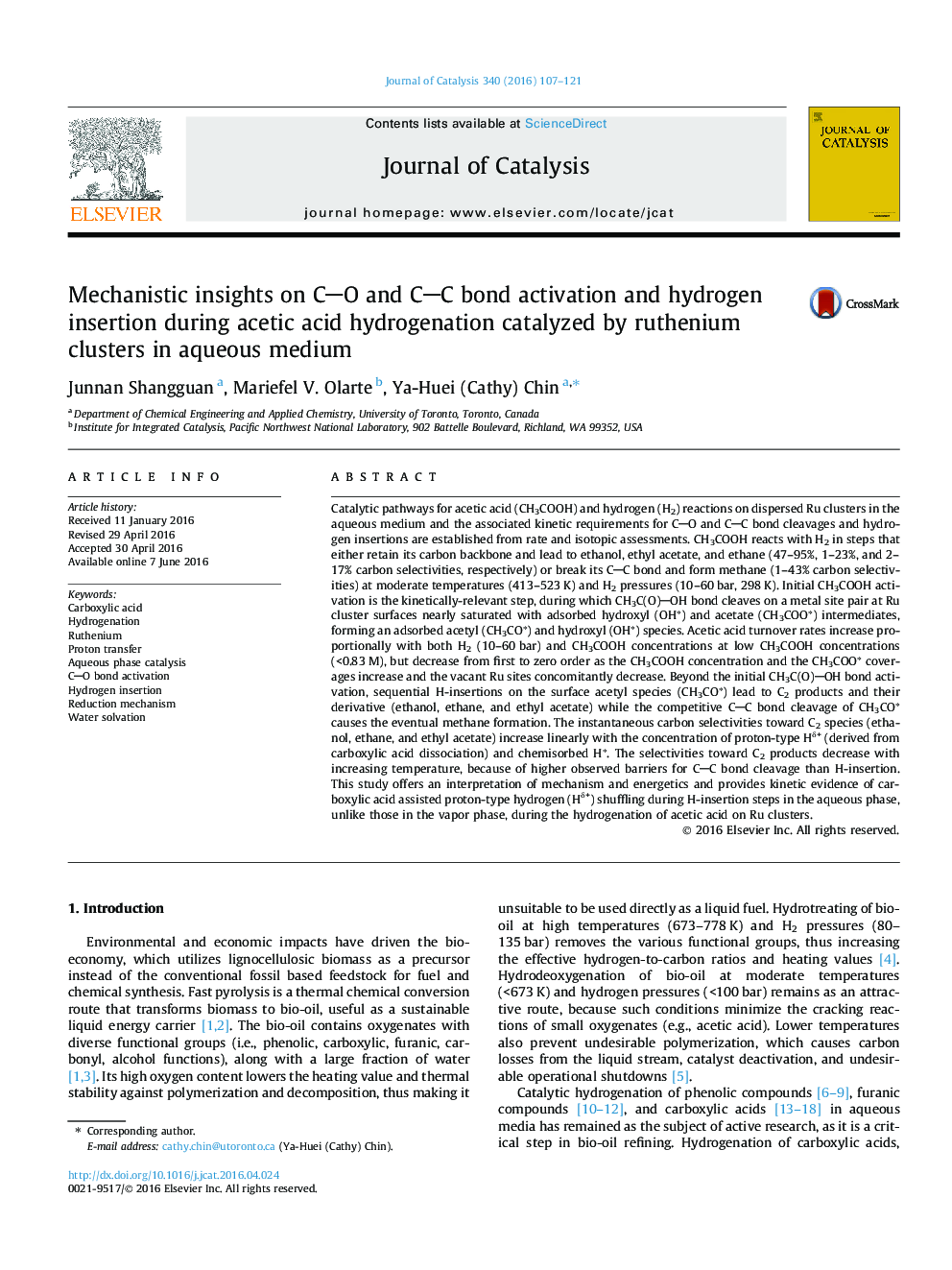| کد مقاله | کد نشریه | سال انتشار | مقاله انگلیسی | نسخه تمام متن |
|---|---|---|---|---|
| 60513 | 47535 | 2016 | 15 صفحه PDF | دانلود رایگان |

• Carboxylic acid activates on Ru via COH bond cleavage to acyl species.
• Fate of acyl species determines carbon selectivities.
• Carboxylic acid acts as a proton transfer catalyst.
• Measured and DFT-derived barriers are consistent, when considering water solvation.
• Water solvation influences the apparent barriers for carboxylic acid activation.
Catalytic pathways for acetic acid (CH3COOH) and hydrogen (H2) reactions on dispersed Ru clusters in the aqueous medium and the associated kinetic requirements for CO and CC bond cleavages and hydrogen insertions are established from rate and isotopic assessments. CH3COOH reacts with H2 in steps that either retain its carbon backbone and lead to ethanol, ethyl acetate, and ethane (47–95%, 1–23%, and 2–17% carbon selectivities, respectively) or break its CC bond and form methane (1–43% carbon selectivities) at moderate temperatures (413–523 K) and H2 pressures (10–60 bar, 298 K). Initial CH3COOH activation is the kinetically-relevant step, during which CH3C(O)OH bond cleaves on a metal site pair at Ru cluster surfaces nearly saturated with adsorbed hydroxyl (OH∗) and acetate (CH3COO∗) intermediates, forming an adsorbed acetyl (CH3CO∗) and hydroxyl (OH∗) species. Acetic acid turnover rates increase proportionally with both H2 (10–60 bar) and CH3COOH concentrations at low CH3COOH concentrations (<0.83 M), but decrease from first to zero order as the CH3COOH concentration and the CH3COO∗ coverages increase and the vacant Ru sites concomitantly decrease. Beyond the initial CH3C(O)OH bond activation, sequential H-insertions on the surface acetyl species (CH3CO∗) lead to C2 products and their derivative (ethanol, ethane, and ethyl acetate) while the competitive CC bond cleavage of CH3CO∗ causes the eventual methane formation. The instantaneous carbon selectivities toward C2 species (ethanol, ethane, and ethyl acetate) increase linearly with the concentration of proton-type Hδ+ (derived from carboxylic acid dissociation) and chemisorbed H∗. The selectivities toward C2 products decrease with increasing temperature, because of higher observed barriers for CC bond cleavage than H-insertion. This study offers an interpretation of mechanism and energetics and provides kinetic evidence of carboxylic acid assisted proton-type hydrogen (Hδ+) shuffling during H-insertion steps in the aqueous phase, unlike those in the vapor phase, during the hydrogenation of acetic acid on Ru clusters.
Figure optionsDownload high-quality image (124 K)Download as PowerPoint slide
Journal: Journal of Catalysis - Volume 340, August 2016, Pages 107–121